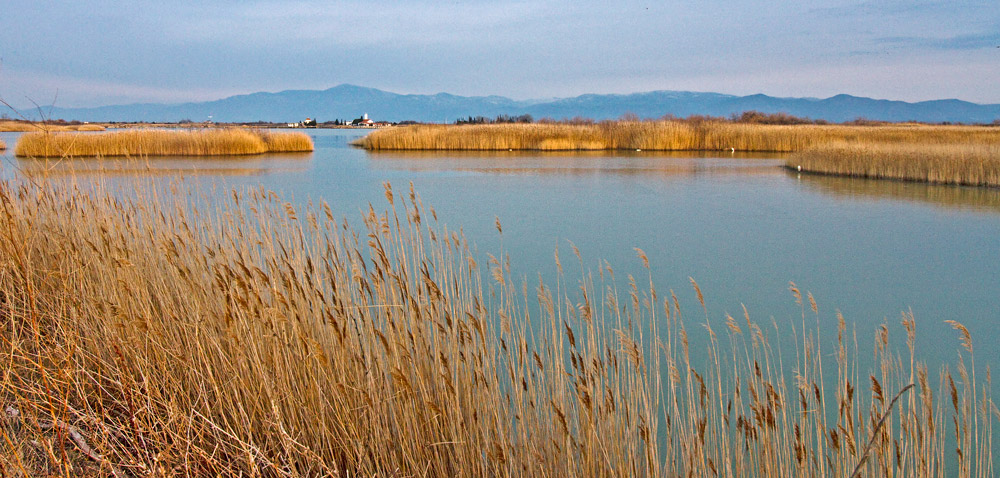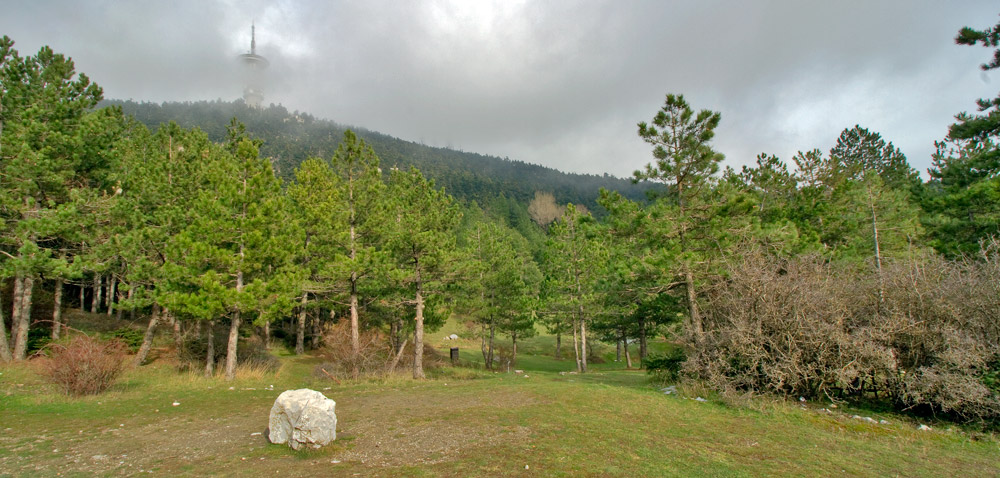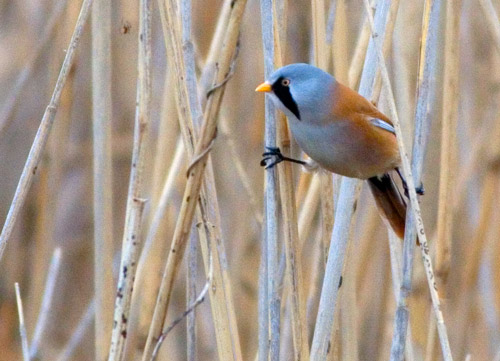National Parks
Prespa lakes

Two beautiful lakes crowned by large mountain ranges that unite three nations, creating what is considered to be one of Europe’s most important habitats. Mikri and Megali Prespa (Liitle and Big Prespa) lay at an altitude of 850 meters at Florina prefecture in the northwest of Greece. During the ancient times and together with Lake Ohrid in the north, were called the lakes of the Dassaric basin. Prespes were formed during the Tertiary period and were initially united. Over the years, the deposition of material from the river of Agios Germanos to the east of the lakes, created a sandy bridge which eventually separated the lakes. Today the water level of Mikri Prespa is higher than that of the Megali Prespa and water inflow between the two lakes is regulated through a small canal at Koula place. Most of Mikri Prespa is located in Greece and is characterized by the presence of the historic island of Agios Achilleios, the small island Vidronisi, endless reedbeds and large areas of wet meadows. To the south of Prespa lays Mount Triklarion and to the east rises the big mountain range of Varnoudas. The origin of the name “Prespa” is from the latin “praesepe” which means a cradle, a rather successful name as the lakes are located in the middle of a basin that preserves a vast wealth of wildlife. The size of the National Park expands to 195 sq.km. of which 82 sq.km. belong to the waters of the lakes. With a general approach, the region is divided into five major ecosystems. First and foremost, the wetlands created by the two lakes along with the reedbeds and the wet meadows in which thousands rare birds find shelter and endemic freshwater fish spawn. Then come the vast fields bordering the lakes, where bird flocks gather to feed with crop residues and together with small rodents create the ideal hunting conditions for birds of prey and carnivorous mammals. A little higher starts the zone around the villages, where a wide variety of wild and domesticated fruit trees, the presence of a net of streams and rivers, the rich soil and the relatively smooth geomorphology attract a big variety of animals. After the settlements, slopes with thick forests arise and finally, over 1,800 meters in the mountainous mass of Varnoudas, alpine meadows spread out.
Prespes hosts over 1,700 species of plants, classifying the area as one of the most important for the flora of Greece. The forests of the area consist of dozens of species, such as silver fir, common beech, silver birch, balkan pine, bosnian pine, montpellier maple, greek maple, common alder, ash, silver poplar, black poplar, silver lime, various oaks, wild box, hazel, elm and nine kinds of willows. A presence of great importance is the forests of foetid and greek junipers, which at Prespa are found in the very rare form of perennial trees. The aquatic vegetation is distinguished by the water lilies Nuphar lutea and Nymphaea alba, and other interesting species such as Azolla filiculoides, Potamogeton gramineus, Callitriche palustris, Aldrovanda vesiculosa, Lemna trisulca, Utricularia australis, Stuckenia pectinata, Ranunculus rionii, Oenanthe aquatica and Salvinia natans. The most important plants of Prespa are Phelypaea boissieri, Centaurea soskae, Anthemis macedonica, Ramonda serbica, Gentiana punctata, Acanthus greuterianus, Cynoglottis barrelieri subsp. serpentinicola, Heracleum orphanidis, Sedum aetnense, Sempervivum ciliosum, Astragalus physocalyx, Pinguicula balcanica, Adonis aestivalis, Comandra umbellata subsp. elegans and Viola velutina. Other important species of flora are Anemone nemorosa, Achillea distans, Allium oleraceum, Globularia bisnagarica, Geum coccineum, Haplophyllum coronatum, Eryngium palmatum, Vaccinium myrtillus, Asarum europaeum, Ajuga laxmannii, Bellidiastrum michelii, Onosma visianii, Sempervivum ruthenicum, Bruckenthalia spiculifolia, Goniolimon tataricum, Lilium candidum, Lilium chalcedonicum, Lilium albanicum, Narcissus poeticus subsp. poeticus, Lomelosia rotata, Bidens cernuus, Centaurea finazzeri subsp. kozanii, Colchicum doerfleri, Iris germanica, Orthilia secunda, Campanula bononiensis, Cirsium tymphaeum, Tephroseris integrifolia, Heliotropium halacsyi, Silene damboldtiana, Silene waldsteinii, Silene frivaldszkyana, Crocus chrysanthus, Fritillaria gussichiae, Fritillaria montana, Melampyrum heracleoticum, Viola eximia, Anthyllis aurea and Rosa pendulina. Many orchids are also grown in the area, such as Epipogium aphyllum, Anacamptis morio, Cephalanthera damasonium, Cephalanthera rubra, Dactylorhiza cordigera, Dactylorhiza saccifera, Himantoglossum jankae, Neottia ovata, Neotinea ustulata, Platanthera bifolia, Orchis purpurea and Ophrys apifera.
Prespes hosts over 1,700 species of plants, classifying the area as one of the most important for the flora of Greece. The forests of the area consist of dozens of species, such as silver fir, common beech, silver birch, balkan pine, bosnian pine, montpellier maple, greek maple, common alder, ash, silver poplar, black poplar, silver lime, various oaks, wild box, hazel, elm and nine kinds of willows. A presence of great importance is the forests of foetid and greek junipers, which at Prespa are found in the very rare form of perennial trees. The aquatic vegetation is distinguished by the water lilies Nuphar lutea and Nymphaea alba, and other interesting species such as Azolla filiculoides, Potamogeton gramineus, Callitriche palustris, Aldrovanda vesiculosa, Lemna trisulca, Utricularia australis, Stuckenia pectinata, Ranunculus rionii, Oenanthe aquatica and Salvinia natans. The most important plants of Prespa are Phelypaea boissieri, Centaurea soskae, Anthemis macedonica, Ramonda serbica, Gentiana punctata, Acanthus greuterianus, Cynoglottis barrelieri subsp. serpentinicola, Heracleum orphanidis, Sedum aetnense, Sempervivum ciliosum, Astragalus physocalyx, Pinguicula balcanica, Adonis aestivalis, Comandra umbellata subsp. elegans and Viola velutina. Other important species of flora are Anemone nemorosa, Achillea distans, Allium oleraceum, Globularia bisnagarica, Geum coccineum, Haplophyllum coronatum, Eryngium palmatum, Vaccinium myrtillus, Asarum europaeum, Ajuga laxmannii, Bellidiastrum michelii, Onosma visianii, Sempervivum ruthenicum, Bruckenthalia spiculifolia, Goniolimon tataricum, Lilium candidum, Lilium chalcedonicum, Lilium albanicum, Narcissus poeticus subsp. poeticus, Lomelosia rotata, Bidens cernuus, Centaurea finazzeri subsp. kozanii, Colchicum doerfleri, Iris germanica, Orthilia secunda, Campanula bononiensis, Cirsium tymphaeum, Tephroseris integrifolia, Heliotropium halacsyi, Silene damboldtiana, Silene waldsteinii, Silene frivaldszkyana, Crocus chrysanthus, Fritillaria gussichiae, Fritillaria montana, Melampyrum heracleoticum, Viola eximia, Anthyllis aurea and Rosa pendulina. Many orchids are also grown in the area, such as Epipogium aphyllum, Anacamptis morio, Cephalanthera damasonium, Cephalanthera rubra, Dactylorhiza cordigera, Dactylorhiza saccifera, Himantoglossum jankae, Neottia ovata, Neotinea ustulata, Platanthera bifolia, Orchis purpurea and Ophrys apifera.
The importance of the area for birds is enormous as there are over 270 species living here. The lakes hold the largest colonies of dalmatian pelicans, about 1,000 pairs, together with almost 350 pairs of great white pelicans making Prespa the only region in Europe that both species reproduce in such large numbers. The rare pygmy cormorant is abundant with more than 1,300 couples and a small number of goosanders, a remnant of the Ice Age, still reproduces in the lakes. The birds of prey include golden eagles, white-tailed eagles, eastern imperial eagles, ospreys, short-toed snake eagles, honey buzzards, black kites, marsh harriers, hen harriers, common buzzards, northern goshawks, sparrowhawks, kestrels, lesser kestrels, red-footed falcons, merlins, eagle owls, long-eared owls, little owls, tawny owls and barn owls. Other important birds of the National Park are red-throated loons, bitterns, white and black storks, glossy ibisses, spoonbills, greylag gooses, white-fronted gooses, red-crested pochards, ferruginous ducks, hazel grouses, rock partridges, grey partridges, woodcocks, wood pigeons, bee-eaters, rollers, black woodpeckers, green woodpeckers, horned larks, dippers, nuthatches, alpine accentors, great grey shrikes, crested larks, rock thrushes, mistle thrushes, barred warblers, bearded reedlings, penduline tits, coal tits, willow tits, wallcreepers, rooks, yellow-billed choughs, tree sparrows, bramblings, hawfinches, rock buntings, yellowhammers, ortolan buntings, bullfinches and red crossbills.
There are 11 species of amphibians in the area, among them fire salamanders, macedonian crested newts, greek newts, common toads, yellow-bellied toads, eastern spadefoots, tree frogs and agile frogs. The reptiles include 22 species like, hellenic pond terrapins, Hermann’s tortoises, Dalmatian algyroides, sand lizards, green lizards, smooth snakes, balkan whip snakes, Caspian whipsnakes, Montpellier snakes, grass snakes, dice snakes, ratsnakes, long-nosed vipers and adders. Prespa is one of the richest places in Europe in mammal fauna, as here live 60 species. On the top are brown bears, wolfs, wild cats, chamoises, roe deers, wild boars, otters, red foxes, badgers, weasels, brown hares, red squirrels, edible dormouses and forest dormouses. Prespa is consider one of the most important biotopes in Europe for bats with 26 different species inhabit here. The richness of the fish fauna of the lakes and rivers is also great, represented by 23 species, of which 9 are close endemic to Prespa. These are Barbus prespensis, Alburnoides prespensis, Alburnus belvica, Chondrostoma prespense, Pelasgus prespensis, Rutilus prespensis, Squalius prespensis, Cobitis meridionalis and Salmo peristericus.
There are 11 species of amphibians in the area, among them fire salamanders, macedonian crested newts, greek newts, common toads, yellow-bellied toads, eastern spadefoots, tree frogs and agile frogs. The reptiles include 22 species like, hellenic pond terrapins, Hermann’s tortoises, Dalmatian algyroides, sand lizards, green lizards, smooth snakes, balkan whip snakes, Caspian whipsnakes, Montpellier snakes, grass snakes, dice snakes, ratsnakes, long-nosed vipers and adders. Prespa is one of the richest places in Europe in mammal fauna, as here live 60 species. On the top are brown bears, wolfs, wild cats, chamoises, roe deers, wild boars, otters, red foxes, badgers, weasels, brown hares, red squirrels, edible dormouses and forest dormouses. Prespa is consider one of the most important biotopes in Europe for bats with 26 different species inhabit here. The richness of the fish fauna of the lakes and rivers is also great, represented by 23 species, of which 9 are close endemic to Prespa. These are Barbus prespensis, Alburnoides prespensis, Alburnus belvica, Chondrostoma prespense, Pelasgus prespensis, Rutilus prespensis, Squalius prespensis, Cobitis meridionalis and Salmo peristericus.
Πως θα πάτε
Prespa lays 45 km from the city of Florina and 54 km from the city of Kastoria. If you are coming here from Athens, the shortest road (560 km via Lamia, Domokos, Karditsa, Trikala and Grevena) is the most beautiful as you pass through picturesque plains and mountains, full of wildlife. If you prefer the national highway, you can come from the Athens-Thessaloniki highway to Egnatia (100 km more). From Thessaloniki via Egnatia highway you will reach Prespa in 2.5 hours (250 km).Εμφάνιση στο χάρτη
click to see the place on the map(Latitude: 40.80321451091167, Longitude:21.089653822008813)
Social Networks
Also Read

Nestos Delta and lakes Vistonida-Ismarida
One of the most important wetland complex of the Balkans that spreads on the coast of the Thracian sea and magnetizes thousands of birds every year.

Parnitha
The long-suffering Parnitha mountain spreads out to the north of Attica, proving that wildlife manages to survive in spite of the criminal mistakes of humans.













